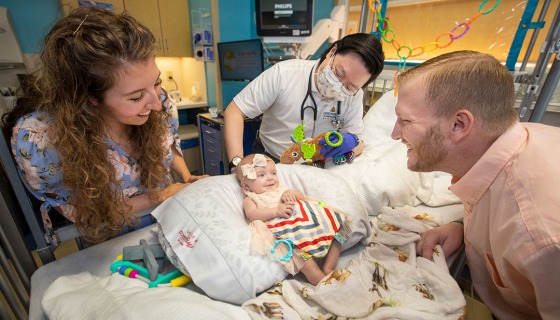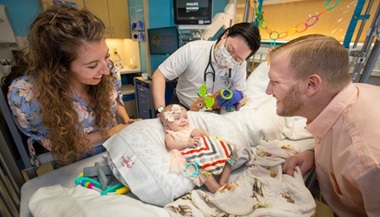Becker Muscular Dystrophy
What You Need to Know
- Becker muscular dystrophy is similar to Duchenne muscular dystrophy and is characterized by progressive muscle weakness. However, Becker muscular dystrophy is less common than Duchenne muscular dystrophy and is associated with milder clinical symptoms.
- Like Duchenne muscular dystrophy, Becker muscular dystrophy is a genetic condition that affects mostly males.
- Becker muscular dystrophy symptoms usually show up in a person’s teens or early adult years. Its course is slower than that of Duchenne’s and can be harder to predict.
- Becker muscular dystrophy is caused by a genetic problem in producing dystrophin, a protein that protects muscle fibers from breaking down when exposed to enzymes. People with Becker muscular dystrophy produce more dystrophin than those with Duchenne muscular dystrophy.
- The condition is named for the German physician Peter Emil Becker, who first described this variant of muscular dystrophy in the 1950s.
What are the signs and symptoms of Becker muscular dystrophy?
Becker muscular dystrophy signs and symptoms show up in patients during their teens or young adult years. As with the more serious Duchenne muscular dystrophy, the pattern of muscle weakening and wasting commonly begins in the hip and pelvis areas, and then progresses to the thighs and shoulders.
As muscles weaken, patients may notice changes when they participate in physical activities and sports. This weakness can cause a change in gait. Individuals affected with Becker muscular dystrophy may begin to waddle, walk on their toes or push their abdomen forward when walking to maintain balance and compensate for lack of strength in the hips and legs.
What are the risk factors of Becker muscular dystrophy?
Becker muscular dystrophy is a genetic disease caused by a gene on the X chromosome that mothers carrying the gene can pass to their sons.
How is Becker muscular dystrophy diagnosed?
Diagnosing Becker muscular dystrophy is complicated, since it shares so many symptoms with other conditions including Duchenne, limb-girdle muscular dystrophy and spinal muscular atrophy.
The challenge is to determine whether the weakness is originating in the muscles themselves or in the motor neurons (branching from the spinal cord), which control these muscles.
A careful physical and history of signs and symptoms is the first step so the doctor can note the pattern of progression. Diagnostic tests for Becker muscular dystrophy include:
Blood tests: Genetic blood tests can reveal the gene mutation responsible for Becker muscular dystrophy. They can also measure the presence of creatine kinase, an enzyme that forms when muscle tissue breaks down. This substance is elevated in muscular dystrophy and inflammatory conditions.
Muscle biopsy: For those children who have clinical evidence of Duchenne muscular dsytrophy but who do not show one of the common mutations, a small sample of muscle tissue is taken and examined under a microscope to confirm the diagnosis.
Electromyogram: This test checks to see if the muscle weakness is a result of destruction of muscle tissue rather than nerve damage.
Electrocardiogram (ECG or EKG): A test that records the electrical activity of the heart, an ECG shows abnormal rhythms (arrhythmias or dysrhythmias) and detects heart muscle damage.
The heart comprises mostly muscle, and therefore it is affected by muscular dystrophy. Becker muscular dystrophy can cause cardiomyopathy, a weakening of the heart muscles, which, if unaddressed, can lead to heart failure and the need for a transplant.
Becker Muscular Dystrophy Treatment
There is not a cure for Becker muscular dystrophy at present. A doctor may prescribe steroid medications to help individuals remain able to walk for as long as possible.
The clinical course of Becker muscular dystrophy is variable. Some people may require a wheelchair by the time they reach their 30s; others may be able to continue walking with or without a cane for many years.
A multidisciplinary team of specialists with experience in treating Becker muscular dystrophy can help address symptoms:
-
Physical and occupational rehabilitation professionals can design exercise programs and teach stretching activities to minimize contractures, which are hardened or deformed joints caused by contracting muscles and tendons.
-
Orthopaedic surgeons with expertise in muscular dystrophy can treat contractures and scoliosis.
-
Cardiologists track the patient’s heart function with EKGs and echocardiograms.




